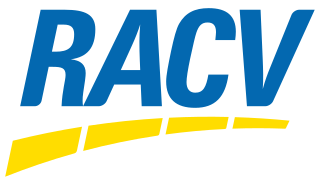
AA Limited, trading as The AA, is a British motoring association.
The Royal Automobile Club of Australia (RACA) is an Australian motoring organisation, which has also incorporated the Australian Imperial Services Club since 1987.

The NRMA is an Australian organisation offering roadside assistance, advocacy for motorists and road-users, motoring advice, car servicing, International Driving Permits, travel and other services in New South Wales and the Australian Capital Territory. It is a member-owned mutual company limited by guarantee. It was formed in 1920.

RAC Limited is a British automotive services company headquartered in Walsall, West Midlands. Its principal services are roadside assistance and general insurance, and its subsidiaries include RAC Motoring Services Ltd, RAC Financial Services Ltd and RAC Insurance Limited. It was a private club owned by its members until sold in 1999, eventually acquired in 2014 and 2015 by GIC Private Limited and CVC Capital Partners.

The Royal Automobile Club of Victoria (RACV) is a motoring club and mutual organisation. It offers various services to members, including insurance and roadside assistance.
Turbo Dispatch is a public domain standard for the electronic transfer of job details, initially using packet radio, but now also using the internet. It is used throughout the United Kingdom to pass the details of stranded motorists between all the major UK motoring organisations and their 400 plus vehicle recovery agents. In many cases it is also used by the vehicle recovery agent to pass the details to the attending recovery vehicle.

The ADAC, officially the Allgemeiner Deutscher Automobil-Club, is Europe's largest automobile association. The ADAC is the largest verein (club) in Germany, with around 21 million members. Its headquarters are located in Munich. Its original and most well-known service is roadside assistance.
The Australian Automobile Association (AAA) was established in 1924. The AAA is the peak organisation for Australia's motoring clubs and their eight million members, and advances the interests of all road users across Australia to ensure land transport networks are safe and sustainable, and that the cost and access to transport is fair.
The Royal Automobile Club of QueenslandLimited(RACQ) is a mutual organisation and Queensland’s largest Club, providing services including roadside assistance, insurance, banking and travel to its approximately 1.75 million members.
The RAC Foundation is a registered charity.

Sir Clive Bossom, 2nd Baronet, was a British Conservative politician and Member of Parliament (MP).
Sir Trevor Edwin Chinn is a British businessman, philanthropist, and political activist. He is a Labour Party supporter and donor as well as active in Jewish and pro-Israel causes.
The Society of Motor Manufacturers and Traders (SMMT) is the trade association for the United Kingdom motor industry. Its role is to "promote the interests of the UK automotive industry at home and abroad."
An automobile association, also referred to as a motoring club, motoring association, or motor club, is an organization, either for-profit or non-profit, which motorists can join to enjoy benefits provided by the club relating to driving a vehicle. There is most often an annual membership fee to join. A membership identification card, valid for the time period of membership paid, is typically issued to the member.

Roadside assistance, also known as breakdown coverage, is a service that assists motorists, motorcyclists, or bicyclists whose vehicles have suffered a mechanical failure that either cannot be resolved by the motorist, or has prevented them from reasonably or effectively transporting the vehicle to an automobile repair shop. Roadside assistance employees respond to calls for service to inspect the vehicle and attempt to render appropriate repairs. Roadside assistance may be provided by departments of transportation, automobile associations, vehicle insurance providers, or dedicated roadside assistance organizations.
The Royal Automobile Association of South Australia (RAA) is a South Australian automobile club that provides a range of member services. Their services include 24-hour emergency breakdown, insurance, vehicle inspection, member advocacy, road safety, motoring road rules, information service, technical advice, travel services, tour planning, and accommodation bookings.

The Royal Automobile Club of Western Australia is a motoring club and mutual organisation, offering motoring services and advice, insurance, travel services, finance, driver training and exclusive benefits for their members. As an independent voice for road users in WA, RAC is concerned with all aspects of road and community safety.

Vehicle recovery is the recovery of any vehicle to another place, generally speaking with a commercial vehicle known as a recovery vehicle, tow truck or spectacle lift.
The Torrens Trophy is awarded to an individual or organisation for demonstrating "Outstanding Contribution to the Cause or Technical Excellence of Safe and Skilful Motorcycling in the UK". It is named in honour of The Motor Cycle editor and Royal Automobile Club (RAC) vice-president Arthur Bourne, who wrote a column under the pen name Torrens. The RAC established the trophy to recognise "outstanding contributions to motor cycle safety" before extending its purpose to include individuals considered to be "the finest motor cyclists". The trophy, an eight-pint silver tankard, has been awarded infrequently since 1979 by the Torrens Trophy Nominations Committee, which is composed of a panel of experts; it is only presented if, in the opinion of the RAC, the achievement can be justified to deserve the award. The winner is honoured at a ceremony at the RAC's Pall Mall clubhouse and headquarters in London.













